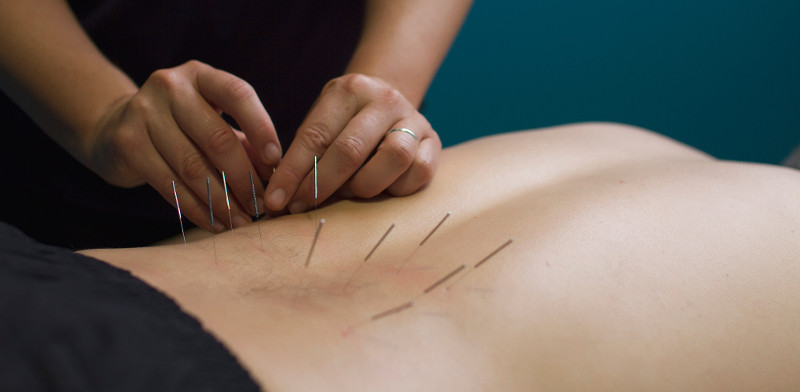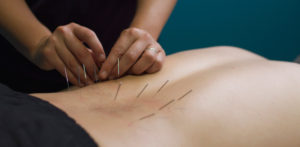
The 101 on a Dry Needling Physio
Dry needling physio is an invasive treatment technique. Whereby the physio will insert fine filament needles through the skin to the underlying tissues, primarily muscles, to stimulate a therapeutic response.
When targeted on certain dysfunctional muscle groups or sections of muscles, the needles stimulate a healing response to restore normal  muscle function. The treatment will also alter pain perception.
muscle function. The treatment will also alter pain perception.
Dysfunctional regions of muscles are defined as ‘active myofascial trigger points’ or MTrP.
More on trigger points in the muscles
An active myofascial trigger point is defined as a ‘hyperirritable spot on skeletal muscle that is associated with a hypersensitive palpable nodule in a taut band’.
When the physio physically compresses trigger points, patients are particularly more tender than other areas of the same muscle. This can give rise to distinctive pain referral patterns, where the areas of pain are felt away from the specific trigger point. For example, a trigger point in the gluteal muscles can cause pain to be felt in the back of the thigh. Muscles with active myofascial trigger points appear weak and tight, and often display restriction in range of motion and sensitivity to stretch.
Trigger points can form due to a variety of reasons. A few common factors include direct trauma, muscular strains, nerve impingement, sleep deprivation, infections and stress (mechanical, mental or emotional).
The dry needling technique and what to expect
The physiotherapist will palpate the muscle at fault to determine where the exact trigger point is located. Once the trigger points is found, the physiotherapist will introduce the needles through the skin directly above the trigger points. From this, they will gently guide the needles to the exact trigger point.
In general, the needles are not felt going through the skin. Once the needle hits the trigger point, a very brief twitch response in the muscle may occur. The local twitch responses are therapeutic and desirable.
Like trigger point release therapy, pain can be felt anywhere along the referral pattern of the trigger point. This pain should gradually ease off with time. The time the physio will leave the needles in the body vary. However, it is usually until the pain associated with the trigger point settles.
Post treatment, it is common and natural to obtain some achenes in the targeted muscles. The physio often requires a few sessions of dry needling therapy to see results. In other words, treatment effects are effective.
How many sessions of dry needling are required?
Dry Needling can be a beneficial adjunct to other forms of physiotherapy treatment. Like every injury/condition, initially we aim to treat the acute symptoms until they settle and patients are able to self-manage. At this stage, to prevent any aggravations, continued “tune up” appointments by a physio are recommended.
Dry Needling can be used by a physio in the early stages of management to settle acute symptoms. This will result in less frequent tune up sessions. Therefore, dry needling is typically done by a physio for multiple sessions. In summary, the number of sessions required will depend on the type of injury and how long it takes for the acute symptoms to settle.
Is dry needling by a physio mandatory?
Dry Needling is 100% not mandatory. The practitioner will suggest treatment based on clinical reasoning, but consent from the patient must be obtained before proceeding on. If you are uncomfortable with needling, it is a matter of letting the practitioner know and they can find an alternative treatment.
In addition to this, there are certain factors that may make you unsuitable for dry needling. Your physiotherapist will carefully assess and determine whether you are a patient suitable for this type of treatment.
What types of conditions is dry needling useful for?
As stated above, dry needling can be effective to treat pain from either a sole muscular issue (e.g. muscle strains) OR pain from muscles that have become dysfunctional due to another primary issue. A classic example of this condition, is referred pain down the leg from trigger points in the deep back muscles that have developed as a result of an initial disc bulge injury.
If you are interested in dry needling to treat your injury or have another issues which requires attention. Call the leaders in providing physiotherapy Brisbane wide, Pivotal Motion on 07 3352 5116 or book an exercise physio appointment online today.




